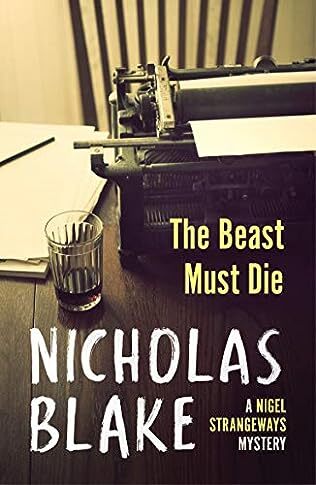The Beast Must Die

A review of The Beast Must Die by Nicholas Blake – 230729
Nicholas Blake, the pen name of Cecil Day-Lewis, has always struck me as a writer who is prepared to challenge the conventions of detective fiction. In this the fourth in his Nigel Strangeways series, originally published in 1938, he mixes elements of an inverted murder mystery with a country house murder and a piece of straightforward detection. The result is a book which was enthralling and one I could not put down.
Blake is not afraid to show his erudition and the text is scattered with literary allusions and Latin phrases. The title is taken from Ecclesiastes by way of Four Serious Songs by Johannes Bach; “One thing befalleth the beasts and the sons of men; the beast must die, the man dieth also, yea, both must die”. The lines pretty much encapsulate the plot with the fine opening paragraph – “I am going to kill a man. I don’t know his name, I don’t know where he lives, I have no idea what he looks like. But I am going to find him and kill him” – adds some flesh to the bone. The beast is the man who killed Francis Cairnes’ son, Martie, in a hit and run accident and Cairnes is going to be the killer’s nemesis. But as the quote from Ecclesiastes suggests, it will be life-ending for him too.
Blake also seems to have a bit of a Hamlet obsession. Not content with reinterpreting Hamlet in Hamlet, Revenge!, he draws into this book the themes of a murderer with a conscience and one who makes perhaps a fatal mistake by hesitating. The first and longest part of the book is in diary form in which Cairnes, who is a detective fiction writer himself using the pseudonym of Felix Lane, shows great ingenuity in tracking down the driver of the vehicle, something that the police had conspicuously failed to do, and by cold-bloodedly using Lena Lawson, an aspiring movie actress, manages to insert himself into the household of George Rattery.
As well as being the hit and run killer Rattery is an odious man who treats his wife and son appallingly. Blake does not allow the reader to have a scintilla of sympathy for a man who we know will be a murder victim. In his diary Cairnes goes to great lengths to plan the perfect murder, one that will look like an accident, when he takes Rattery out sailing.
From the beginning of the second part, the book is in the form of a narrative in the third person. In the second part we learn how Cairnes intricately planned plot fails, with the suspicion that Rattery had got wise to his game. Nevertheless, on that very evening, Rattery dies, having been poisoned in what would have looked like a suicide, if only the bottle of tonic in which the poison had been placed had not been cleared away. Realising that he is in a bit of a hole, although he seems to have a cast-iron alibi for not being anywhere near the scene when the poisoning took place, Cairnes engages the amateur sleuth, Nigel Strangeways, to protect his interests.
In the third part, the most conventional section of the book, Strangeways and Inspector Blount of the Yard, whom we met in Thou Shell of Death, investigate Rattery’s murder, coming to radically different conclusions. A bang on the head from a putter, a visit to an old army colleague of Rattrey’s father, and a closer reading of Cairnes’ diary, leads Strangeways to an inevitable conclusion, although he allows the culprit to come to terms with their unmasking in their own way.
The investigations reveal marital infidelity and that everyone in the extended Rattery menage had reasons to do away with him. The most fascinating character is the young son, Phil, who has been so traumatised by his father’s brutality towards him and treatment of his mother, Violet, that he puts himself into a dangerous position, unaware of the potential consequences.
Although the Cheltenham café scene seemed a bit of an unnecessary and clunky outrider, this is an impressive book with a satisfying conclusion. The search for the perfect murder continues.



